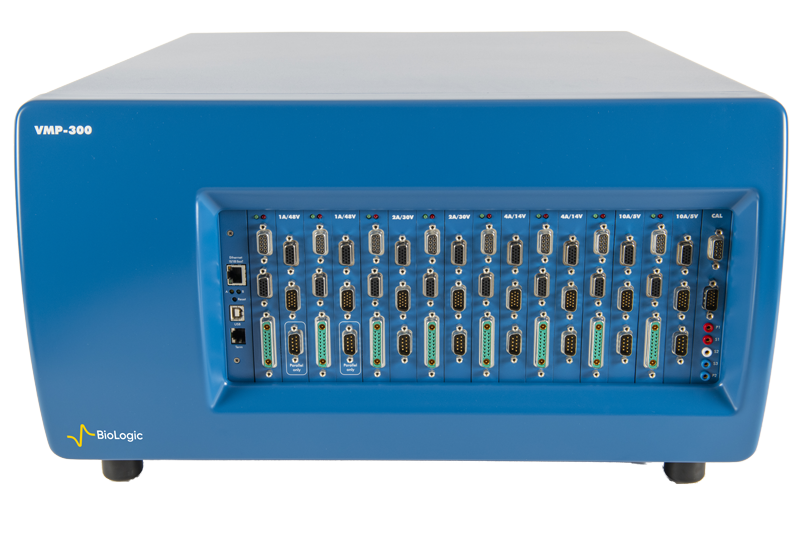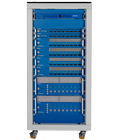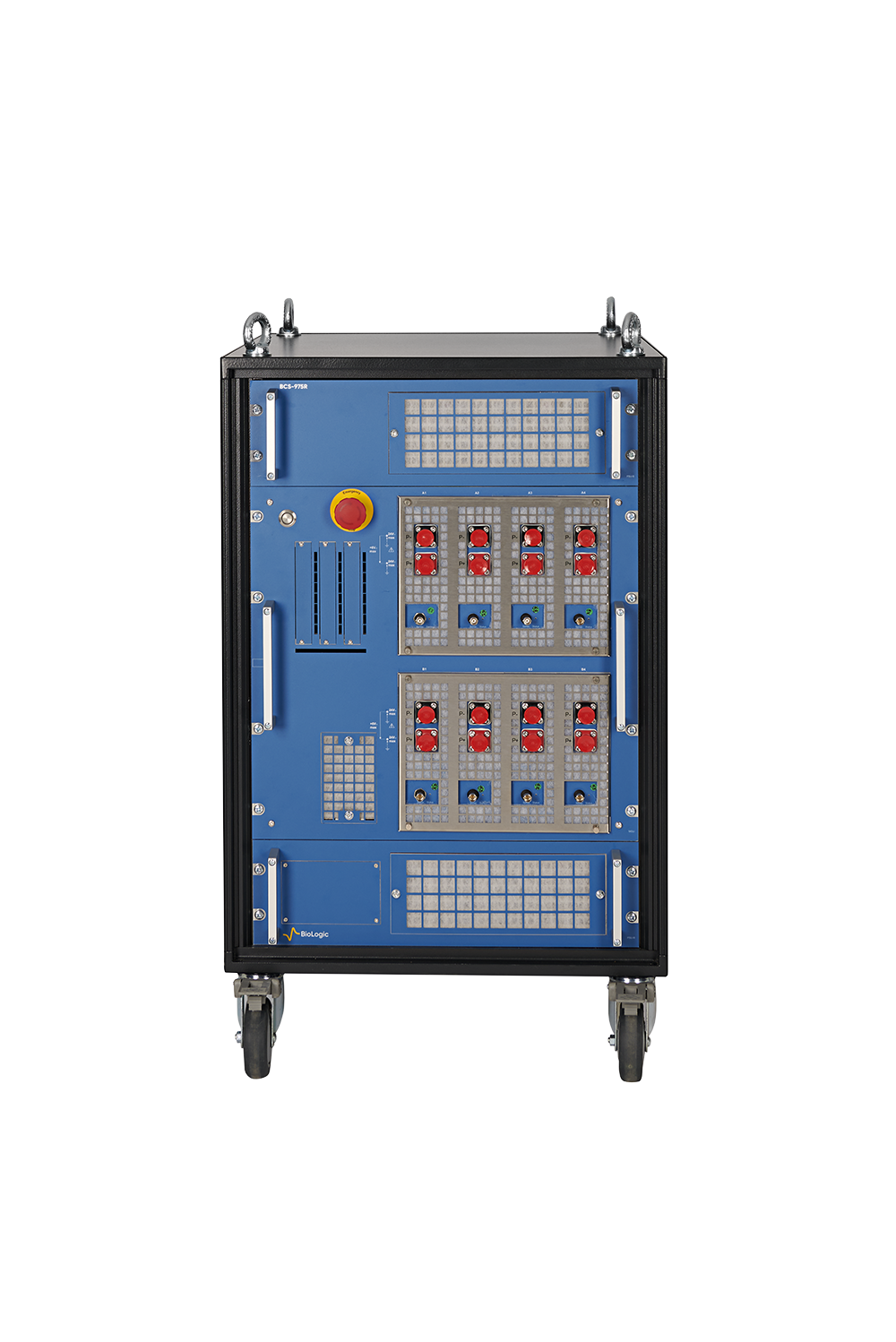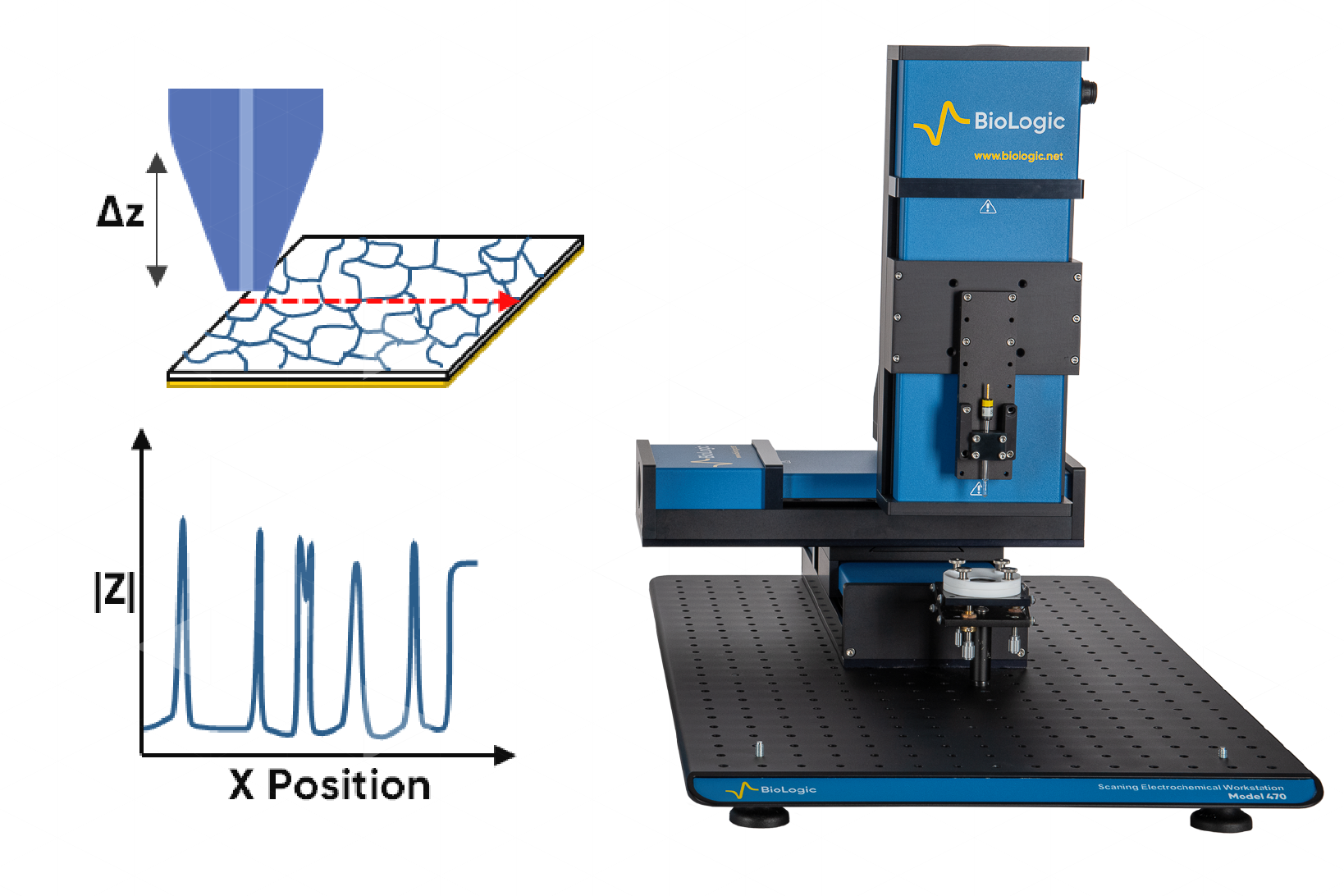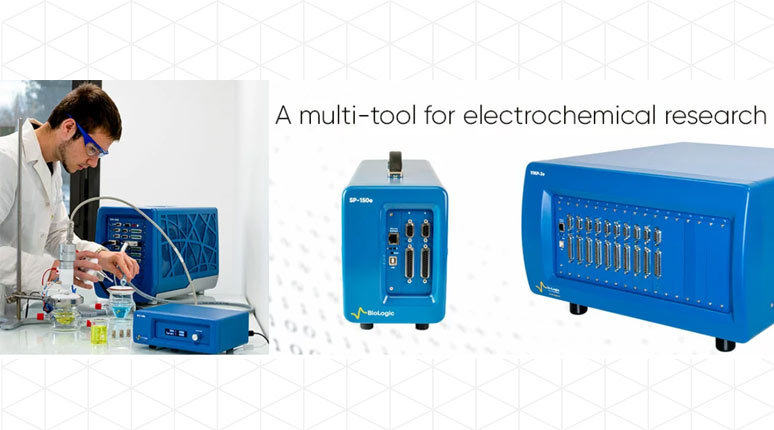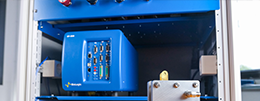Battery R&D Solutions.
Precision tools for every stage of battery R&D — from materials to full-cell validation.
A solution for each step of your battery development journey
Every breakthrough in battery technology follows a path—from initial material discovery to final validation. At each stage, you face unique challenges that require the right instrument. Explore typical configurations from our comprehensive, modular portfolio then connect with our sales experts to design the perfect solution.

Materials & Components Research
“I’m exploring new materials and components and need to understand their fundamental properties”
Whether you’re investigating novel electrode compositions, electrolyte formulations, or separator technologies, you need instruments that can reveal the best electrochemical data for your materials.
Fundamental & Proof of Concept Studies
“I have promising materials, now I want to prove the concept works”
You’ve identified your components —now it’s time to build and test actual battery prototypes. This is where precise control and measurement become critical for success.
Scale-up & Validation
“My concept works—now I need to prove it’s reliable & manufacturable”
You must now prove your promising prototype can perform consistently, safely, and reliably under real operating conditions. This is where rigorous validation becomes essential .
Screenings
“I need to test many variations quickly to optimize my final design”
Before full commercialization, you need to screen numerous design variations, quality control parameters, and production samples. Speed and consistency are paramount—you need reliable results from many samples quickly.
Ready to start your journey or move to the next stage?
Request a quote and take advantage of our personalized advice and get the data you need to make informed decisions.
FAQ.
What frequency range is relevant for Electrochemical Impedance Spectroscopy (EIS) measurement when characterizing batteries?
In battery research, the most relevant frequency range typically is from 10 kHz to 10 mHz:
- high-frequency range (10 kHz – 1 kHz) provides insights into solution resistance and electrolyte conductivity
- mid-frequency range (1 kHz – 100 mHz) shows charge transfer processes and electrode kinetics
- low frequency range (100 mHz – 10 mHz) indicates mass transport limitations and diffusion processes.
Note: Very high-frequency ranges (up to few MHz) is relevant only for solid-state batteries and gives insights into solid ionic conductors.
For the optimal solution, we strongly recommend contacting our sales teams to discuss how we can support your current projects, they can provide personalized recommendations based on your application needs.
What tools can help me model real-life battery cycles?
Simulating complex battery cycles that model real-life activity is essential in battery development. BioLogic solutions feature special tools to import specific profiles instead of manually creating a protocol with thousands of steps:
- Urban Profile inEC-Lab software for potentiostat,
- and Arbitrary User Profile in BT-Test software for battery cycler.
Interested battery ageing? Learn here how you can simulate ripple current with EC-Lab®.
For the optimal solution, we strongly recommend contacting our sales teams to discuss how we can support your current projects, they can provide personalized recommendations based on your application needs.
Can I use a BioLogic instruments to conduct in operando XRD measurement?
At Biologic, we combined the use of a high-quality X-ray diffractometer from partners with our SP-50e/150e potentiostats. With this set up researchers are able to perform in operando XRD measurements on pouch and coin cells during charge and discharge cycles to monitor structural changes in the electrode materials.
For the optimal solution, we strongly recommend contacting our sales teams to discuss how we can support your current projects, they can provide personalized recommendations based on your application needs.
For the optimal solution, we strongly recommend contacting our sales teams to discuss how we can support your current projects, they can provide personalized recommendations based on your application needs.
 Read the article
Read the articleEIS and Battery Screening
Article describing how advanced EIS battery cyclers can play a multipurpose role in battery screening.
 Read the article
Read the articleHow is scanning probe electrochemistry used in battery research?
Scanning probe electrochemistry for battery materials and components research is introduced.
 Read the article
Read the articleHPC: The importance of ultra-precision battery cyclers
As opposed to standard cycling techniques, High Precision Coulometry (HPC) measurements can provide a reliable estimation of battery lifetime quickly
 Read the article
Read the articleInternal Resistance series. Part II: How to determine the internal resistance of a battery
This second in a series of 3 articles will help you to understand internal resistance and how it can be measured.
 Read the article
Read the articleWhat is a battery cycler?
What should I know about battery testing equipment?
 Read the article
Read the articleWhat is a potentiostat and its use in Science & Industry (Electrochemistry Basics Series)
What is a potentiostat? An article detailing every aspect of this versatile electrochemical multitool. Covers Potentiostat functionality and operation, the history of the potentiostat, uses and applications and the future of the potentiostat








